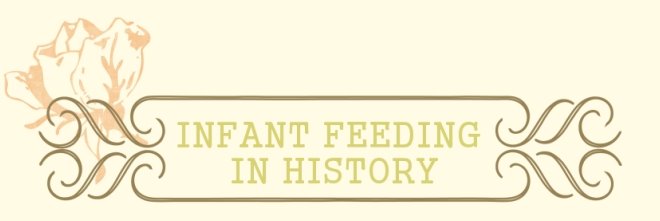Two thousand years of medical advice on breastfeeding: comparison of Chinese and western texts.
Garntner LM, Stone C.
Department of Pediatrics, University of Chicago, Wyler Children's Hospital, IL 60637.
This discussion introduces only a few aspects of the historical writings on breastfeeding in the two cultures. Chinese writings seem to be closer in orientation to modern worldwide medical advice, approaching breastfeeding from a more natural and supportive perspective. Ancient and not-so-ancient western medical advice on breastfeeding often implies the inadequacy of the mother to breastfeed her own infant, especially in the early weeks of life. One can only speculate as to what the historical basis for this may be. European medicine emphasizes the testing of milk for its adequacy. Again, the scientific basis for this is not evident. Modern clinical science finds that the milk of virtually all mothers, even those suffering from significant malnutrition, is adequate for the growth and development of the infant. This focus on the "testing" of milk may represent an early example of the reliance on laboratory diagnosis that has so heavily dominated western medicine in recent years. Finally, western medicine seems more managerial with regard to breastfeeding than Chinese medicine, and has perhaps "medicalized" breastfeeding, a compliant often voiced even now in late 20th century America. Nonetheless, both literatures demonstrate that throughout the history of recorded medicine, physicians have been concerned with promoting optimal breastfeeding and have understood the importance of human milk for the survival, growth, and development of the infant.
PIP: Chinese and Western pediatric scholarship is compared based on published textbook material over the past 2000 years. Modern, late 20th century teachings on breastfeeding are organized around the concept that breastfeeding is a natural, biological behavior that should be initiated immediately after birth and the belief that human milk is almost always the perfect food for the infant, even when the mother is less than adequately nourished or is suffering from some disease. In contrast, ancient and not so ancient Western medical advice on breastfeeding often implies the inadequacy of the mother to breastfeed her own infant, especially in the early weeks of life. This concept continues unquestioned through 1700 years of European medical advice on breastfeeding. One the other hand, William Cadogan's advice in 1750 is remarkably similar to that of the 12th century Chinese physician: absence of medical intervention and a natural and rapid onset of nursing by the biological mother. Chinese writings seem to be closer in orientation to modern worldwide medical advice, approaching breastfeeding from a more natural and supportive perspective. The ancient Chinese medical texts, but not the early European texts, address the origins of human milk. A Chinese work by Sun Simiao (581 to 682) of the Tang Dynasty describes human milk as the product of vital energies. On the initiation of breastfeeding, a 12th century Chinese writing sounds remarkably similar to the advice one would give today to a mother who had just delivered a child. However, Chinese physicians are not without their concepts of bad milk. They describe types of milk that they associate with the induction of various diseases in nurslings. Finally, Western medicine seems more managerial with regard to breastfeeding than Chinese medicine, and has perhaps medicalized breastfeeding. Throughout the 2000 years, both literatures express concern that substitutes for human milk are being used too early and too often.
Publication Types:
- Comparative Study
- Historical Article
MeSH Terms:- Breast Feeding*
- China
- Cross-Cultural Comparison
- Europe
- Female
- History, 15th Century
- History, 17th Century
- History, 18th Century
- History, 20th Century
- History, Ancient
- History, Medieval
- Humans
- Infant, Newborn
- Milk, Human
PMID: 7701356 [PubMed - indexed for MEDLINE]





6 comments:
To my readers, I removed the previous comment because it was an advertisement (spam) to an online store that sells bottles and other feeding supplies. The purpose of this site is to investigate infant feeding in history.
Hi, I tried to look up this article,and the article it refers to is nothing about China and the west, just about decisions to introduce solids or not.
I would really like to see the article about the west and china, do you have any other reference to it?
KFD,
Thanks for the comment. It is nice to know that people aren't just reading these posts, but are using it for something!
Anyway, I don't have the original article, I found this abstract during a search and copied it as is. The original citation can be found at:
http://www.ncbi.nlm.nih.gov/pubmed/7701356 (I have also put this link in the original post so that it can be easily clicked on)
Maybe your library can get you a copy of the full article. I hope this helps.
Oh, and one more thing. I think introducing solids is very much tied to breastfeeding recommendations, as people often stop breastfeeding (or introduce solids early) because they believe their babies are not getting adequate food. It is late, so my mommy brain is not able to read the abstract and retain anything at this time. I hope this helps.
KFD,
I just realized that I had the wrong citation as the title of this post. That's why it didn't make sense to you, and I didn't realize that was what you were trying to tell me. Thanks for pointing it out to me. Sorry it took me a while to realize it. And, once again, I'm glad to know you were actually trying to use the information I posted.
Post a Comment